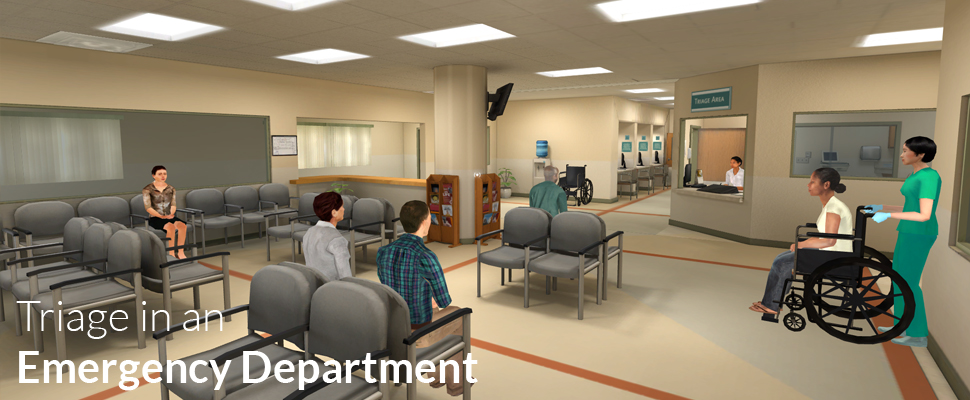Unity3D is an excellent all-around tool for multi-platform developers. With the additional plug-ins for Android and iOS, developers can also create rich, immersive, and interactive content for mobile devices utilizing the same build-once-deploy-many pipeline. This is one of Unity’s many great innovations, which allows developers to power to import assets in their original form (i.e., Maya, Max, Photoshop, etc.) while Unity3D does the work of converting everything to the correct formats for in the various and different builds.
Below, I have provided some distilled information for using Unity to develop in applications and content for Android and iOS devices.
Unity3D Overview:
Unity3D “is an integrated authoring tool for creating 3D video games or other interactive content such as architectural visualizations or real-time 3D animations. Unity’s development environment runs on Microsoft Windows and Mac OS X, and the games it produces can be run on Windows, Mac, Xbox 360, PlayStation 3, Wii, iPad, iPhone,” Android, and online utilizing the Unity web player plugin within the browser.
Unity3D consists of both an editor for developing/designing content and a game engine for executing the final product. (http://en.wikipedia.org/wiki/Unity_(game_engine))
Currently there are over
“one thousand Unity3D games for iPhone, iPod Touch, and iPad [that] are published and live on the App Store.” (http://unity3d.com/unity/publishing/ios)
Some examples of markets that potentially benefit from creating content with Unity3D include:
Health:
 |
| image from CliniSpace website |
CliniSpace™ (http://www.clinispace.com/)
CliniSpace™ offers the next generation of training environments for healthcare professionals – immersive, authentic, 3D virtual environments that replicate the familiar surroundings of daily work.
Logging into these environments, learners encounter realistic scenarios and problems. They practice alone and in teams, learning to make decisions, to communicate effectively, and to recover safely from errors.
As a hosted application, accessed over the Internet, CliniSpace™ is a cost-effective and scalable addition to all simulator training.
DoD:
 |
| from Micro Nav Aircraft Marshalling Trainer (AMT) website |
Aircraft Marshalling Virtual Trainer (http://hwd3d.com/services/custom-3d-virtual-trainers-simulations-and-training-videos/aircraft-marshalling-virtual-trainer/):
“Aircraft Marshalling is a job function that requires the use of hand signals to communicate with and direct pilots and other relevant personnel during take-off and taxi. To train for this skill-set, the student would need to physically perform the hand/arm signals and an instructor corrects or approves them instantly.
But what does the Canadian Air Force schoolhouse do when there is a lack of human instructors and a need to provide scalability? Enter Heartwood & Atlantis Eduplus.
Heartwood & Atlantis Eduplus developed an application that uses motion sensing technology (COTS device i.e. the Kinect) to accurately translate real life body gestures into on-screen virtual actions. An on-screen instructor (instructor avatar) leads trainees through a series of lessons, and the learner must repeat the signals accurately to advance.
As the game progresses, the trainee is exposed to a variety of virtual scenarios that test their marshalling skills. Gold Winner at Serious Play Award Competition.”
 |
| image from Roma website |
Academia / Education:
Virtual History – Roma (http://itunes.apple.com/it/app/virtual-history-roma/id410358487?mt=8&ign-mpt=uo%3D4) iOS app
A real journey through time, in Italian and English, in Rome, the capital of the greatest empire of antiquity, and explored virtually reconstructed in 3D at 360 degrees. The format offers a surprising rediscovery of Roman civilization through media and innovative features : digital restoration of the statues from the spectacular aerial views of the exciting metropolis of 2000 years ago, the manipulation of models of legionnaires, gladiators and war machines to the exploration of monuments in 3D, including the Colosseum, Circus Maximus, the Mausoleum of Adrian and many others. The reconstruction of the original in many points is superimposed and compared with the current reality. As through a time machine, we can observe the transformation of the site where it currently stands the Coliseum, originally the fire and from the pond the Golden House of Nero, to the amphitheater.
The virtual journey continues to Pompeii, Herculaneum and other places of the Roman civilization – in Europe and the Mediterranean – proposed with 3d models, fact sheets and hundreds of high quality images. Among the unpublished content, the reconstruction of the original appearance of the “home of the Gladiators”, recently dropped out in the context of Abundance Street in Pompeii. Maps and introductory cards allow us to investigate the origins of Rome, the conquests and the downfall of ‘ empire, the techniques of engineering, art, war and entertainment of the Romans, the profiles of the emperors, to find out what survived in the modern world of Roman civilization. Virtual History International is the first app to use the technology ‘ Bubble Viewer ‘, designed in Italy and patented in the U.S., which values the sensors in mobile tablets (accelerometer and compass) by creating a new generation of bubble-shaped digital illustrations. The new digital book becomes a sort of telescope that can see the 3D reconstruction of Imperial Rome and in the future – in subsequent releases of the series – other imaginary of other cities and environments of all kinds.
 |
| screenshot from iTunes website |
Self-Help / Personal Enrichment:
Tiga Talk Speech Therapy Games (http://itunes.apple.com/ca/app/tiga-talk-speech-therapy-games/id412024533?mt=8#&partnerId=30&siteID=6pnvjxKjsS4-IwIsPIIHeXTE4dK6lM4ZCQ)
“Tiga Talk Speech Therapy Games”, developed with licensed speech and language pathologists, is a fun way for children to develop speech sounds through playful voice-controlled games that can improve speech clarity, articulation, and instill confidence. The app is for parents and speech therapists working with toddlers and children with language delays, as well as any parent looking to give their child a head start in early language development.
Children learn fundamental phonetic sounds, that are the building blocks of language, as they play 23 fun voice controlled games on an imaginative adventure with Tiga and friends.
Integration with other mobile development platforms
Applications created with Unity3D can be run on Windows, Mac, Xbox 360, PlayStation 3, Wii, iPad, iPhone, Android, and online utilizing the Unity web player plugin within the browser.
True Multiplatform Authoring
Unity lets you target all platforms from a single tool. Within a single project you have complete control over delivery to all platforms. (‘Build Once…Deploy Many [times]’, as I like to say.) “Publishing a build for iPhone will create an entire, complete Xcode project that just works. Press ‘Build and Run’ in Unity and [the] game automatically compiles in Xcode, installs, and launches.” (http://unity3d.com/unity/publishing/ios)
Additional software and/or considerations needed to create mobile content in Unity3D
iOS Requirements
In order to license and use Unity iOS Publishing, developers must meet the following requirements:You must be an approved Apple Developer for iOS and install the iOS SDK (requires Intel-based Mac running Snow Leopard)
Android Requirements
“Android has proven itself to be the fastest growing mobile platform. Unity gives you the power to painlessly develop applications for any of the 30 million-plus Android devices out there.”
Setting up your Android Developer environment for Unity3D (http://unity3d.com/support/documentation/Manual/android-GettingStarted.html)
Before you can run Unity Android games on the actual device, you’ll need to have your Android developer environment set up. This involves downloading and installing the Android SDK with the different Android plaforms and adding your physical device to your system (this is done a bit differently depending on whether you are developing on Windows or Mac). This setup process is explained on the Android developer website, and there may be additional information provided by the manufacturer of your device.
